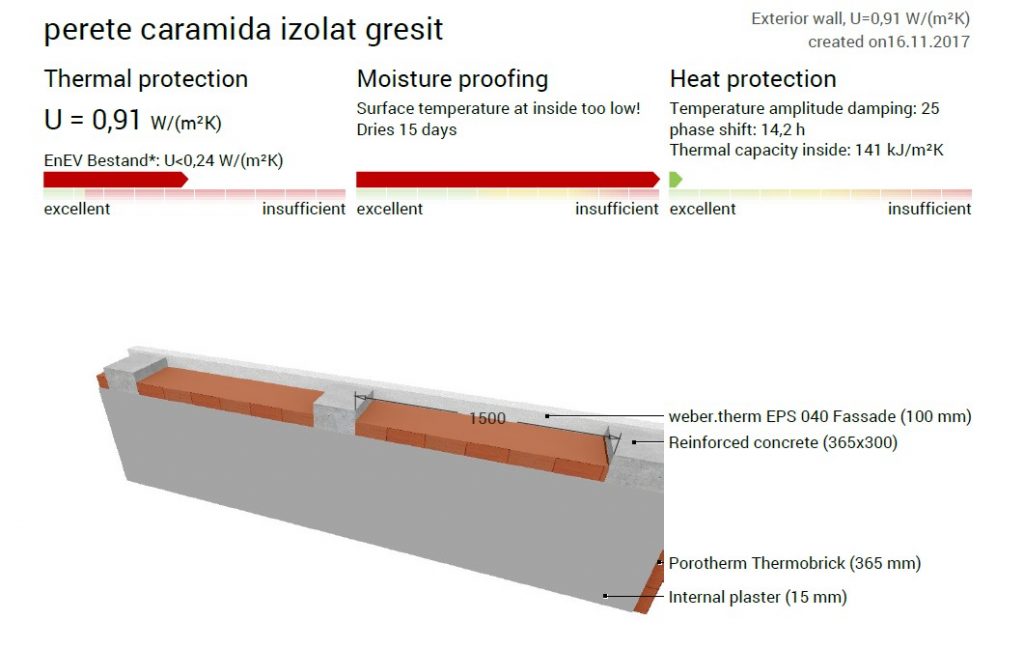The walls of a house are very important, especially the materials they are made of and the way they are placed in layers on one side and the other of the metal structure,
the romehoME team together with the designer certified in passive houses from “ZecaPH” seriously considered the challenge of optimizing the energy to the maximum the Dia house built on the metal structure.
It is a challenge because of the multitude of thermal bridges that can appear within a metal structure.
However, in the present case, by applying a series of strategies to reduce heat losses, thermal bridges as well as problems that may arise from sealing, we managed to reduce the heat requirement from 141 kwh/m2a to a maximum of 30 kwh/m2a.
If we refer to the annual heating costs, we are talking about a reduction from 1000 euro heating cost per year to 250 euro heating cost per year.
Dia Arges, the house on the metal structure with almost zero energy consumption / Casa Nzeb “Nearly 0 energy building”
External wall The result: excellent
Thermal protection U=0.099 W/(mpK)
U<0.24 W/(mpK) Moisture impermeability Result: excellent Drying reserve 159 g/mpa No condensation Heating protection Result: excellent Temperature amplitude damping >100
Heat exchanges: not relevant
Internal heat capacity 50 kJ/m2K
Exterior brick wall with wrong insulation
Thermal protection U=0.91 W/(mpK) The result: between excellent and insufficient
U<0.24 W/(mpK)
Moisture impermeability Result: insufficient
The surface temperature inside is too low
it dries in 15 days
Heating protection The result: excellent
Temperature amplitude damping: 25
Heat exchanges: 14.2 h
Internal thermal capacity: 141 kJ/m2K
External brick wall properly insulated
Thermal protection U=0.212 W/(mpK) The result: between excellent and insufficient
U<0.24 W/(mpK) Moisture impermeability The result: excellent The surface temperature inside is too low, it dries in 2 days condensation 3.3 g/m2 Heating protection The result: excellent Damping of temperature amplitude >100
Heat exchange: not relevant
Internal thermal capacity: 256 kJ/m2K















